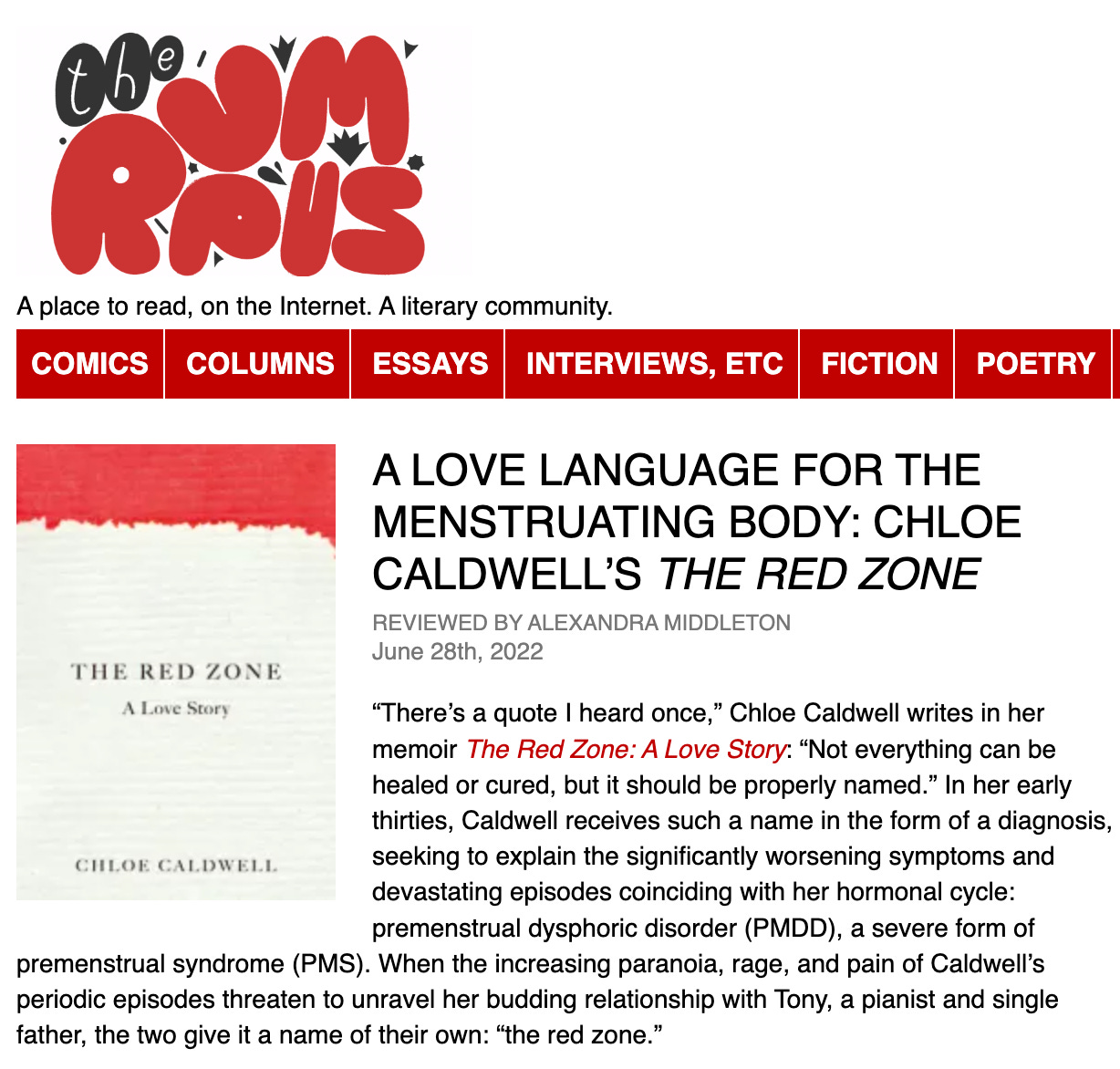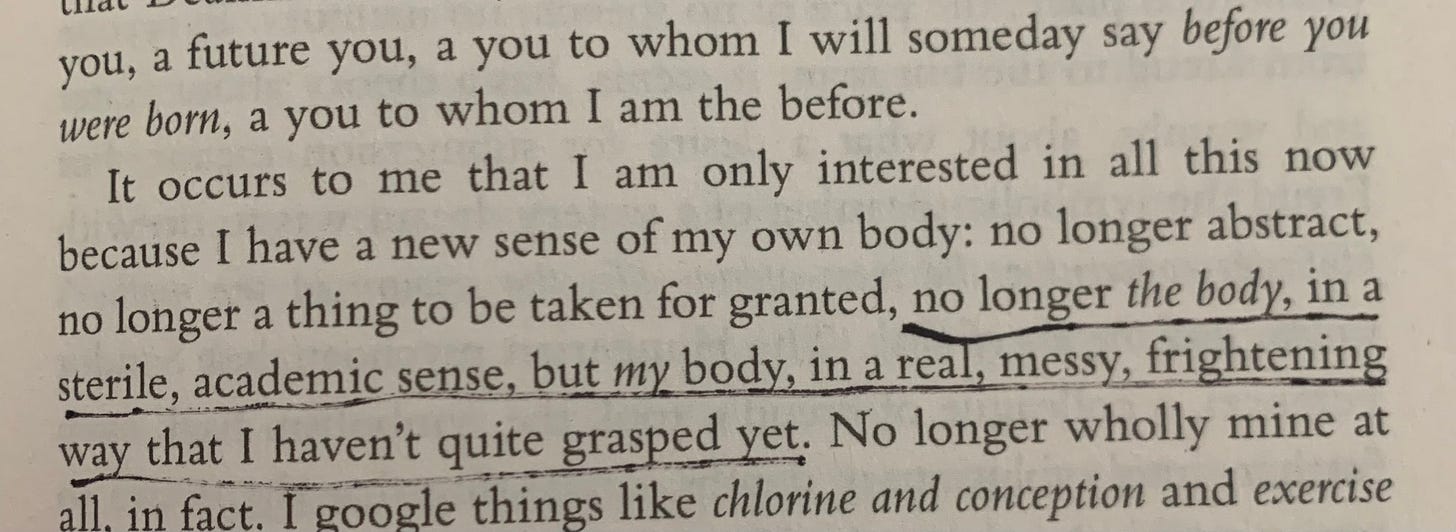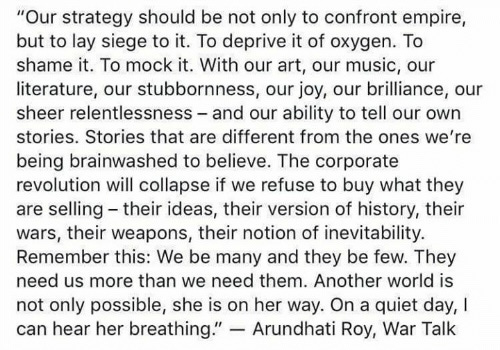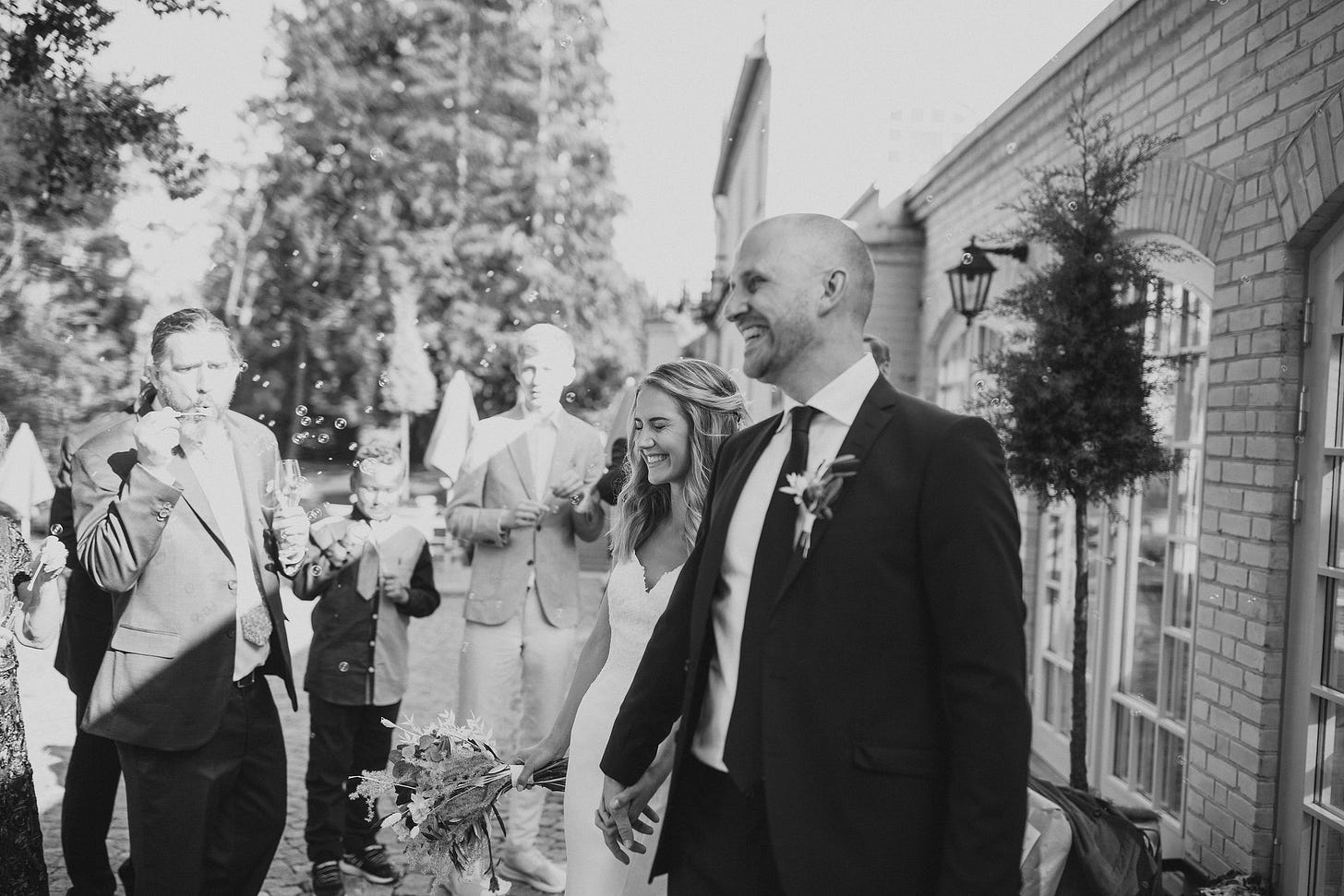no words without body
on first-person narratives from the body, uteruses, & a new review in The Rumpus; collective effervescence; a playlist for summer
Re-surfacing here after some time away from the newsletter and other fixtures of everyday life to just be in what was—without hyperbole—the most joy-filled season of my personal life (further below, some fieldnotes).
I last wrote you in early May right after the Supreme Court leak, and now we are on the heels of Roe v. Wade’s overturn. Even if we anticipated it: still, the gutting. Writing this, my hands shake, my stomach boils. I’ve written and rewritten many versions of this letter to you, each time falling short. Words fail.
What to do when you can’t write about what you can’t not write about? (Nicole Chung contemplates this question with wonderful nuance in her newsletter, I Have Notes).
What follows is an attempt, and then a few reflections on the one thing that is surfacing clearly to me: the vital importance of body narratives.
But first. If you are scared, angry, and especially if you are living in a body with a uterus in the United States, I see you. I also want to affirm how terrifying knowing “this is only the beginning” feels. Case in point: since writing this the Supreme Court has made three more devastating rulings. (Read Jia Tolentino’s New Yorker article on why we’re not “going back” half a century to a pre-Roe era, but headed somewhere much worse).
Watching the assault on reproductive rights and bodily autonomy in my home country—while living in a country with one of the world’s most generous parental leave policies, universal healthcare, abortion rights, and basic securities supporting both parents and children to thrive—adds distortion and distance. It also adds another kind of fire, of incense. It makes all the more clear to me that, as so many have articulated, this was never about babies and lives and all about control and power over bodily autonomy (and so many other forms of control and power). Assaults on body sovereignty, personhood, and reproductive justice are not at all new and will disproportionately harm folks who are already oppressed. This is the machinery of it all.
If you are feeling paralyzed by grief and rage, a desire to act and a disorientation toward just how... So many people have been working tirelessly in anticipation of this overturn, there are established networks of care and mutual aid and collective organizing to support (scroll down for mutual aid resources). Relatedly, I found these images by Slow Factory helpful for identifying many creative (top) and pragmatic (bottom) ways each of us with our unique talents and proclivities can engage in dismantling systems of oppression and in world-building:

Where do you locate yourself? Or, what is missing here?
If you write or make art and feel a bit skeptical about or wary of the adage—“we need to tell our stories now more than ever”—I again recommend Nicole Chung’s recent newsletter. She addresses the fear of writing as just “rearranging deck chairs on the Titanic” and expands the aperture of time and urgency, situating writing alongside other forms of action, in a way I found helpful.
Amidst my own grappling for words, one conviction I want to strongly emphasize: story matters. body narratives matter.
I am convinced that personal narratives about living and surviving in a body—particularly the kinds of bodies and subjectivities erased by patriarchal, white supremacist, heteronormative, and ableist narratives—are vital to whatever future world it is we are trying to assemble.
Bodily autonomy and sovereignty include access to (reading and writing) a diverse and empowered and radically honest range of body languages and narratives.
(Recommended reading: First-person stories of the body are much more than clickbait)
Suffice it to say, uteruses have been front and center in my world lately — for the above reasons, for my own budding medical anthropology research reasons (more soon), for personal reasons, and because I’ve been reading personal narratives in which uteruses, and the people living with them, are central characters:
I recently reviewed Chloe Caldwell’s memoir, THE RED ZONE, for The Rumpus—you can read the review here. THE RED ZONE is a story of pre-menstrual dysphoric disorder (PMDD), menstruation as its own language, queer kinship and family-making, collective storytelling, and, above all, intimacy and love: with others, with oneself, with one’s own body.
I also recently devoured Adrift: Fieldnotes from Almost-Motherhood by Miranda Ward, which charts the author’s five-year journey of multiple miscarriages, ectopic pregnancy, and D&C’s. Ward, a geographer, writes about the “wilderness of the body”—apt language given ongoing attempts to colonize it—in a way which is as visceral as it is an inspiring model for fusing academic and personal narrative. I love how she moves from academic framings of “the body” (aware that this singularizing is itself a form of erasure) to the personal, “my body.”
I’m now immersed in Molly Caro May’s Body Full of Stars: Female Rage and My Passage Into Motherhood, and on deck is Angela Garbes’ Essential Labor. In the coming weeks I’ll share a more extensive list of body narrative reads and podcasts.
What reading these narratives, especially now, are reinforcing for me is this:
A collective censorship around or aversion to or absence of first-person narratives about abortion, birthing, menstruation, rage, pregnancy, and the body is not separable from all of the efforts underway to undermine our ability to inhabit our bodies. Which, in turn, makes it easier to control (and erase) them.
As Melissa Febos writes in her scintillating craft book on this subject, Body Work: The Radical Power of Personal Narrative:
“Resistance to the lived stories of women, and those of all oppressed people, is a resistance to justice.”
If words make worlds, their absence and erasure has the power to destroy worlds and lives. I hope and trust that part of whatever world-building we are arching toward plants body narratives back into its soil, and with it plants us back into our bodies.
fieldnotes on joy + collective effervescence
So much is forcing us to reckon with the twinning of despair and joy. And I am tired of platitudes that try to recuperate the space between them. Still, I am trying to practice affirming, not excluding or denying, the messy coexistence of joy right now. I don’t think a single newsletter issue in the past 2+ years has elicited so many replies and DM’s of “same here” and “me too” as our last, Letting Joy. While I love your 1:1 missives, I wish you could read one another’s words, to see how not-alone you are.
I want to circle back because, amidst the current rage, I have learned a lot about joy, from the other side of what were the most joy-filled weeks of my life (punctuated by finally celebrating our wedding in Sweden with family from both sides of the Atlantic).
Words escape me here, too. A dear friend put it this way: “you can’t help but be swept off your feet.” That was it. A pure joy that could not possibly be denied, could not help not to be felt, to be carried away, to be swept by, off and up.
To be clear: Pure joy did not look like perfection. It did not look like the complete absence of personal foibles bubbling up trying their best to cloud me away. It looked like “hi foibles I see you” and “it is safe to feel,” — and looked like, felt like, surrender to a flood so undeniably underway and coursing: of emotion, of co-presence, of healing, of celebration. It was a privilege of a lifetime to feel, to be carried, so deeply. And to be with people we love doing the same.
In addition to reminding me of the importance of ritual in social life, our wedding breathed life into a concept that, as an anthropologist, I’ve thought about abstractly, but like many have felt disembodied and distant from for the past few years: collective effervescence. Collective effervescence, coined by the French sociologist Émile Durkheim, describes this very sense of being swept off your feet—a transcendence of one’s own inner world that can occur with co-presence, attention, emotion, and experience shared among others (often in social gatherings & rituals).
As my feet are finding ground again, I’m reflecting on the ways personal and collective life move in swells, on the fleetingness of the elated and disparaged, ecstatic and mundane. I am learning when to move with the swells and when to swim upstream; when to fight the undertow and when to wash ashore.
Louise Erdrich writes:
We are so brief. A one-day dandelion. A seedpod skittering across the ice. We are a feather falling from the wing of a bird. I don’t know why it is given to us to be so mortal and to feel so much.
It is a cruel trick, and glorious.
It is a cruel trick, and glorious. It is, we are, so brief.
It is deeply connecting to acknowledge this, to feel this, in the co-presence of other mortal, brief, feeling-so-much beings.
I am learning how to relate to these swells not in a way that always anticipates the next shoe—of brevity, of mortality—to drop. But in allowing myself to be moved, and in being moved to be changed. To be swayed. To be swept.
To sway, to sweep.
I leave you with an excerpt from the inimitable Toni Morrison’s “No Place for Self Pity, No Room for Fear” (2015) :
This is precisely the time when artists go to work. There is no time for despair, no place for self-pity, no need for silence, no room for fear. We speak, we write, we do language. That is how civilizations heal.
I know the world is bruised and bleeding, and though it is important not to ignore its pain, it is also critical to refuse to succumb to its malevolence. Like failure, chaos contains information that can lead to knowledge — even wisdom. Like art.
reading:
mutual aid & organizing efforts to support:
Northwest Abortion Access Fund — for my fellow Northwest locals
Roe v Wade: What You Can Do — a range of resources to support
a summer playlist:
Tunes to embrace the pause, the heat, the alchemy, the brewing underway in this summer season:
WITHIN updates
Related to body narratives… the fourth season of WITHIN—my series on writing intro/through/from the body through yoga, meditation and breath—is around the corner!
Our 12-week journey begins on Sunday, September 25th, which takes us (in the N hemisphere) from Autumn Equinox all the way up to Santa Lucia (the Swedish midwinter festival of light)—and for those further South, into the belly of summer.
As WITHIN moves into its third (!) year, I’m revamping the format and curriculum to synergize the personal and collective elements of the practice, which includes:
bi-weekly embodied writing [yoga, breath, writing] labs (every other Sunday)
monthly circles (select Thursdays)
one additional (optional) circle for academic writers to approach applying embodied writing techniques to article and dissertation-writing
inquiry tools for finding and engaging your own personal creative rhythm and cycle (exploring the space between discipline and intuition)
Pre-registration for WITHIN opens on July 22 (for past participants & waitlist). If you haven’t already, you can sign up for the waitlist & vote for your preferred times here.
Go gently, feel fully, act boldly. Take care of yourself so that you can nurture and water larger ecosystems of care.
With heart,
Allie









